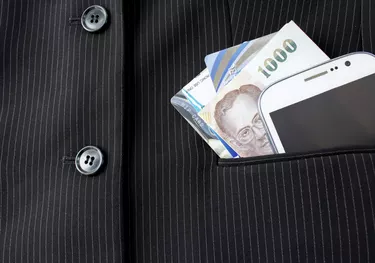
IBAN is an acronym for International Bank Account Number. As the name implies, an IBAN is an identifier that directs international wire transfers into a particular account. Banks require IBANs to send money to financial institutions in certain countries.
IBAN Structure
Video of the Day
The Society for Worldwide Interbank Financial Telecommunication maintains a database of officially registered IBAN codes. IBANs are 15 to 30 alpha-numeric characters long. The IBAN includes two or more letters that denote a particular bank. Another two-digit code identifies the country where the bank is located. For example, Brazilian IBANs contain BR while Austrian banks include the code AT. The IBAN also contains the actual account number you would use if you were to make deposit in person.
Video of the Day
Wire Transfer Requests
When you send a wire, you must provide your banker with the IBAN as well as the name and address of the payee. Bankers enter the IBAN into a SWIFT database to locate the recipient bank's contact information. Due to federal regulations, bankers also have to record personal information about the person initiating the wire. You must tell them your name, address, and present at least one form of government issued identification. You also have to explain the purpose of the transfer.
Wire Processing
International wires are processed through the Fedwire system. Banks pay a fee to the federal reserve to use the system, which are passed on to customers. Additionally, the receiving bank may charge the recipient. Prior to sending the wire, your banker must tell you about all fees and the current exchange rate. You can use this information to weigh the cost of sending the wire in U.S. currency or converting it into foreign currency before the transfer is made.
Additional Considerations
The operating day of the Fedwire system begins at 9 p.m. Eastern Standard Time and ends at 6.30 p.m. EST the following day. You can only wire money during these operating hours. When using IBANs, you also have to contend with time zones in other nations. For example, funds may arrive after local banks have closed for business. National holidays and weekends can cause further delays. Additionally, some domestic banks aren't equipped to send funds overseas. In such instances, your local bank sends the funds through a larger national or regional bank that serves as an intermediary. This extra step prolongs the transfer time frame.